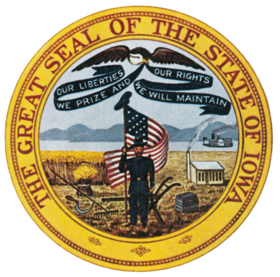Food Safety Online Discussion Activites
Resource overview
The following discussion board activities were taken from various Penn State University Extension unit activities on Foodborne Illness and Food Safety and adapted to work in a 9-12 family consumer science online classroom. Click here to visit their original site and lesson plans.
LEARNING OUTCOMES:
- Students will recognize how food borne illness and food safety can impact their daily lives.
- Students will be able to communicate effectively with peer groups in an online discussion.
EDUCATIONAL STANDARDS ADDRESSED:
Generalize place value understanding for multi-digit whole numbers.
National Standards for Family and Consumer
Sciences Education and Iowa Core Language Arts Standards
- 8.2.1 Identify characteristics of major food borne pathogens, their role in causing illness, foods involved in outbreaks, and methods of prevention.
- 9.2.1 Analyze factors that contribute to food borne illness.
- Cite textual evidence to support analysis of what
the text says explicitly as well as inferences drawn
from the text. (RL.6.1.)
- Cite strong and thorough textual evidence to support analysis of what the text
says explicitly as well as inferences drawn from the text, including determining
where the text leaves matters uncertain. (RL.11-12.1)
- Use technology, including the Internet, to produce and publish writing and to interact and collaborate with others.
TIME REQUIRED FOR LESSON:
45 minutes to one hour
TIME REQUIRED FOR TEACHER PREPARATION:
Less than ten minutes
MATERIALS FOR LESSON:
• Computer and Internet
• Online discussion forum platform
OVERVIEW OF LESSON:
Students will participate in four different online discussion board forums in order to connect with food safety practices and food borne illness information. Students are asked to create a detailed discussion thread and to comment on other student threads.
Discussion #1
Pick out your favorite processed snack food. Write a description of how you think it was processed — starting with the raw materials listed in the ingredient list on the package. Then describe what you think was done to make this food safe.
Discussion #2
Look for online newspaper or journal stories about food companies that describe the safety measures they have taken. Read the article. Ask one question that you have about the food company’s safety measures. What is one thing that surprised you? Comment on two other posts.
Discussion #3
Try and find how your favorite snack is actually processed by looking up the company site, or looking for factory videos on YouTube. If you can’t find the exact snack, you can look for a similar product. For example: If you chose Oreos, but you can only find information on Chips Ahoy, go ahead and use the information that you can find about the similar product. Answer the following questions in your discussion post:
How accurate were you on your processing prediction?
What surprised you about your snack’s processing?
Will you still eat your favorite snack with confidence?
Comment on 2 other posts.
Discussion #4
Using a newspaper, find an article about a case or outbreak of foodborne illness. Pretend you are a food scientist trying to discover why the person/people got sick, and write a two-five paragraph response answering the four questions below. Include a copy or link of the newspaper article with your report.
What food caused the outbreak?
Describe the pathogen that caused people to get sick. What is its scientific name? What kinds of food can it be found in?
How do you think the pathogen could have gotten into the food in the first place?
What was the result of the case/outbreak? Did anyone get sick? Did anyone die?
Comment on 2 other posts.
Assessment of Discussion Threads
Beyond commenting on other student work, you can have the students end their threads with a 3-2-1 activity. Name 3 things you learned, 2 things you found interesting, and 1 question you have.
